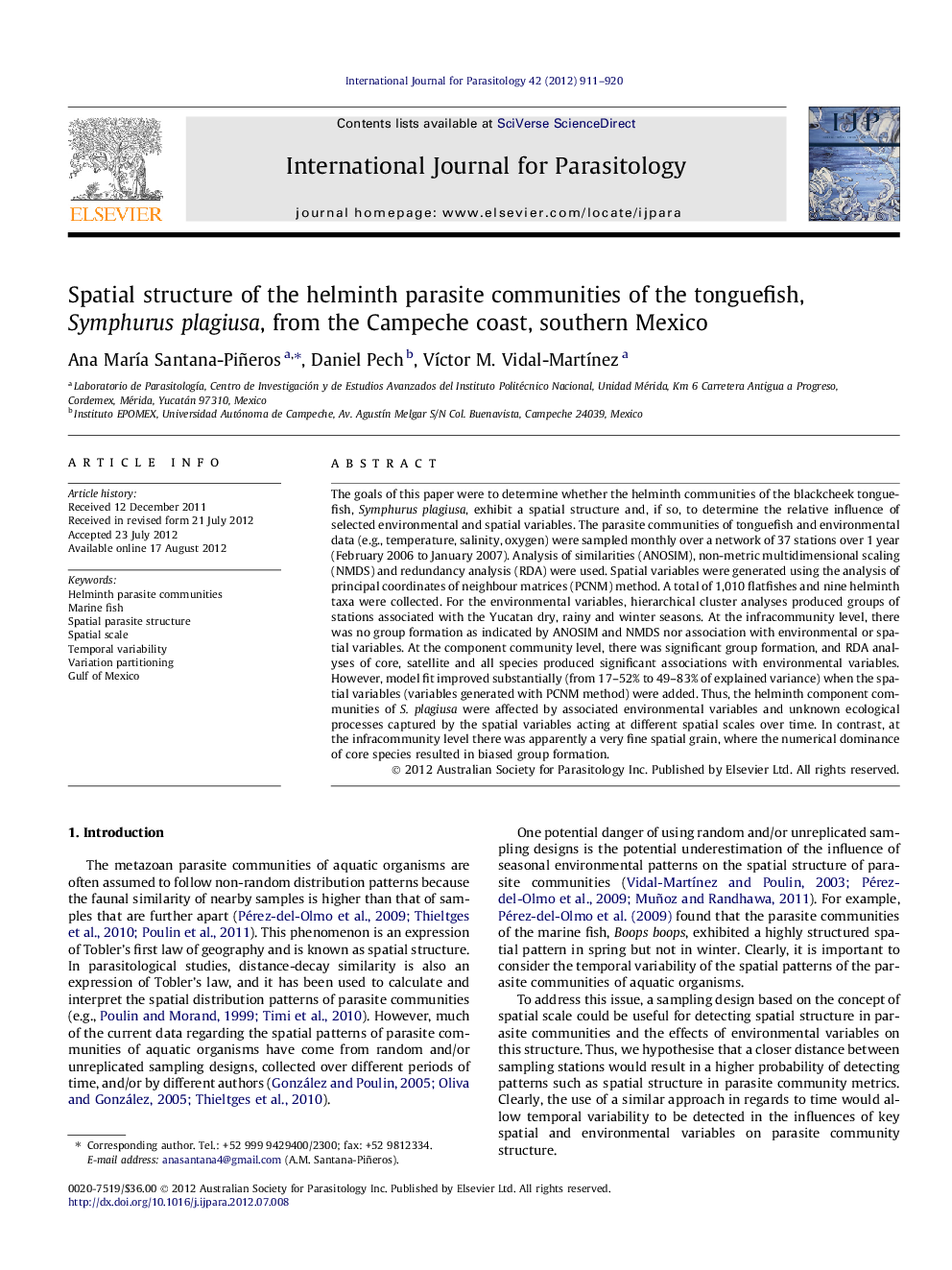| کد مقاله | کد نشریه | سال انتشار | مقاله انگلیسی | نسخه تمام متن |
|---|---|---|---|---|
| 2436265 | 1107296 | 2012 | 10 صفحه PDF | دانلود رایگان |

The goals of this paper were to determine whether the helminth communities of the blackcheek tonguefish, Symphurus plagiusa, exhibit a spatial structure and, if so, to determine the relative influence of selected environmental and spatial variables. The parasite communities of tonguefish and environmental data (e.g., temperature, salinity, oxygen) were sampled monthly over a network of 37 stations over 1 year (February 2006 to January 2007). Analysis of similarities (ANOSIM), non-metric multidimensional scaling (NMDS) and redundancy analysis (RDA) were used. Spatial variables were generated using the analysis of principal coordinates of neighbour matrices (PCNM) method. A total of 1,010 flatfishes and nine helminth taxa were collected. For the environmental variables, hierarchical cluster analyses produced groups of stations associated with the Yucatan dry, rainy and winter seasons. At the infracommunity level, there was no group formation as indicated by ANOSIM and NMDS nor association with environmental or spatial variables. At the component community level, there was significant group formation, and RDA analyses of core, satellite and all species produced significant associations with environmental variables. However, model fit improved substantially (from 17–52% to 49–83% of explained variance) when the spatial variables (variables generated with PCNM method) were added. Thus, the helminth component communities of S. plagiusa were affected by associated environmental variables and unknown ecological processes captured by the spatial variables acting at different spatial scales over time. In contrast, at the infracommunity level there was apparently a very fine spatial grain, where the numerical dominance of core species resulted in biased group formation.
Figure optionsDownload high-quality image (148 K)Download as PowerPoint slideHighlights
► We determined whether the parasite communities of Symphurus plagiusa exhibit spatial structure over 12 months.
► The influence of both spatial and environmental variables on the structure of these communities was quantified.
► Spatial structure of the parasite communities exhibits a strong temporal variability.
► Spatial structure was influenced by several environmental and spatial variables acting at different spatial scales.
Journal: International Journal for Parasitology - Volume 42, Issue 10, September 2012, Pages 911–920